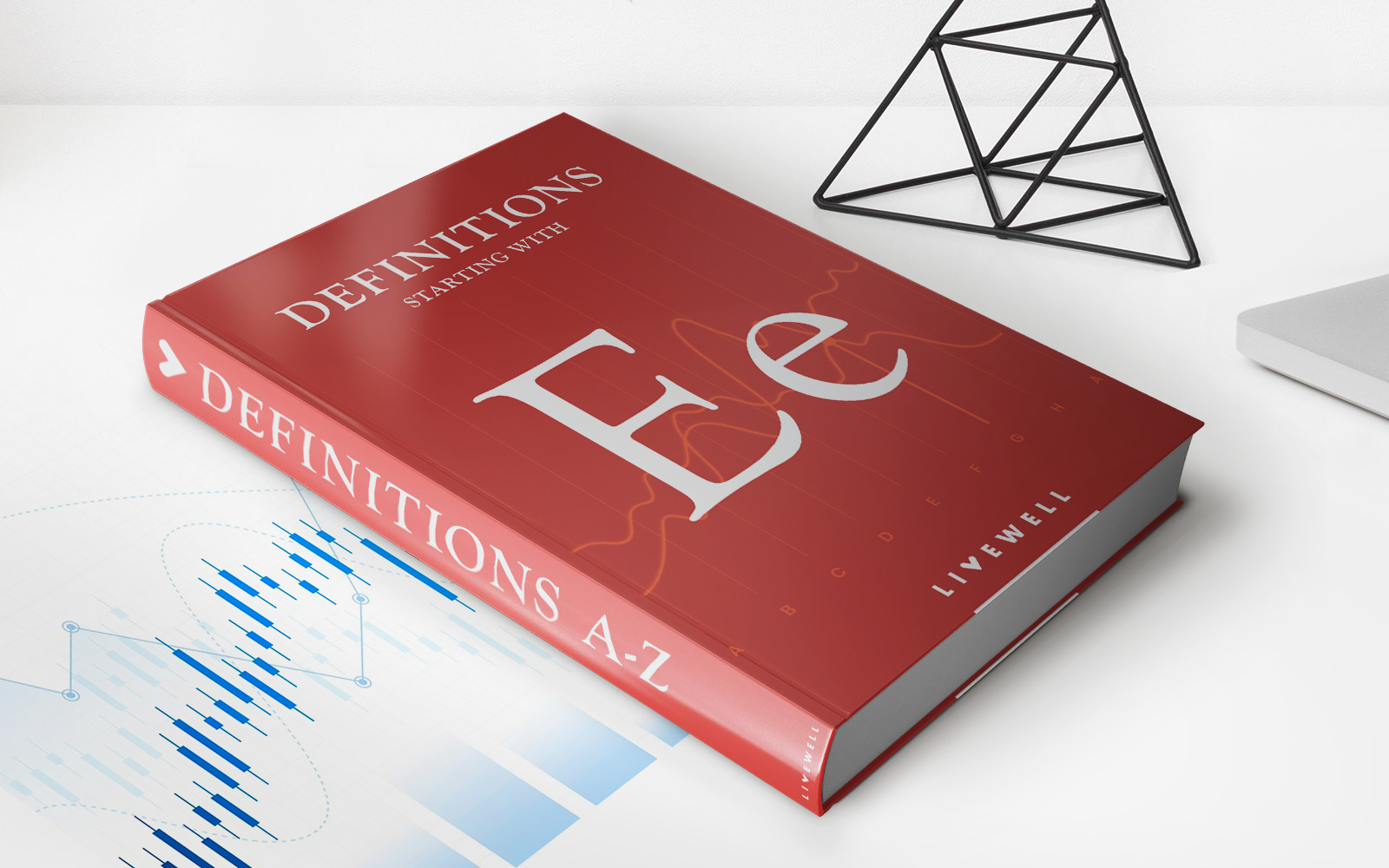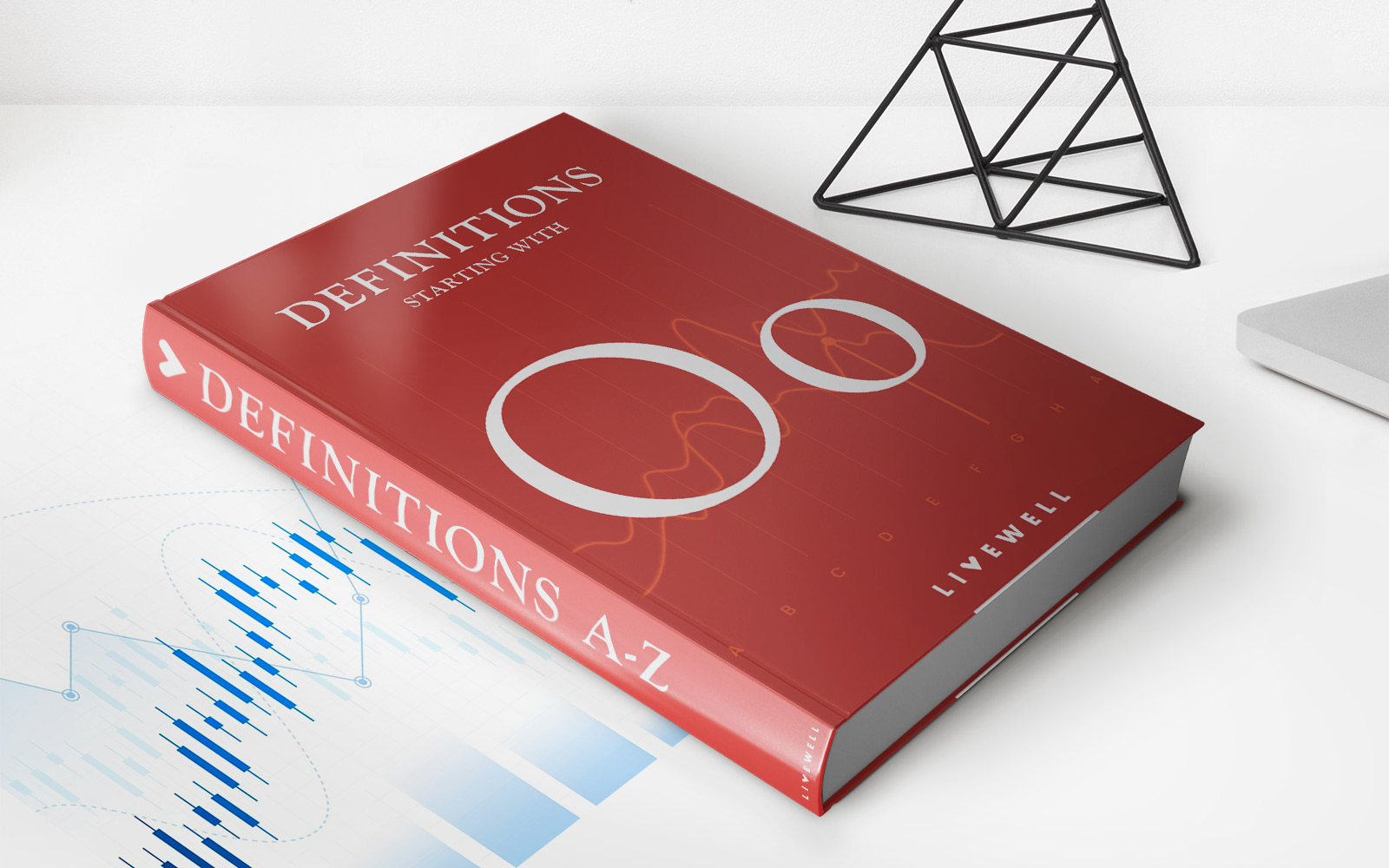Home>Finance>What Is A Declaration Page For Renters Insurance?


Finance
What Is A Declaration Page For Renters Insurance?
Modified: February 21, 2024
Learn what a declaration page for renters insurance is, and how it can help you understand the coverage and finances of your policy.
(Many of the links in this article redirect to a specific reviewed product. Your purchase of these products through affiliate links helps to generate commission for LiveWell, at no extra cost. Learn more)
Table of Contents
- Introduction
- Overview of Renters Insurance
- What is a Declaration Page?
- Purpose of a Declaration Page in Renters Insurance
- Information Included in a Declaration Page
- Importance of Reviewing the Declaration Page
- Understanding the Coverage Details
- How to Obtain a Declaration Page
- Frequently Asked Questions About Declaration Pages
- Conclusion
Introduction
Welcome to the world of renters insurance! Whether you’re a new renter or have been renting for years, it’s important to understand the ins and outs of this type of coverage. One key document that you’ll come across when purchasing renters insurance is the declaration page. This document serves as a summary of your policy – it provides essential details about your coverage, including the types of protection you have and the limits of your policy.
In this article, we’ll delve into what a declaration page for renters insurance is and why it’s crucial to pay attention to it. We’ll also discuss the information typically included in a declaration page, tips for reviewing it, and how to obtain a copy.
Understanding the specifics of your renters insurance policy is essential for protecting your belongings and yourself from unforeseen circumstances. By taking the time to become familiar with the declaration page, you’ll be equipped to make informed decisions about your coverage and ensure that you have the appropriate level of protection.
So, let’s dive into the details and explore the significance of the declaration page in renters insurance policies.
Overview of Renters Insurance
Before we dive into the specifics of the declaration page, let’s start with a quick overview of renters insurance. Renters insurance is a type of insurance policy designed to protect individuals who rent their homes or apartments. While landlords typically have insurance to cover the structure of the building, their policies do not extend to the personal belongings of their tenants.
Renters insurance provides coverage for your personal belongings in the event of theft, fire, water damage, or other covered perils. It also offers liability protection in case someone is injured while on your rental property and you are found legally responsible. In addition, renters insurance can help with temporary living expenses if your rental becomes uninhabitable due to a covered event.
Having renters insurance offers peace of mind knowing that you are financially protected against unexpected events that could wreak havoc on your belongings or place you at risk of liability claims. It’s a small investment that can pay off big time when you need it most.
Now that we have a general understanding of what renters insurance entails, let’s move on to the main focus of this article – the declaration page.
What is a Declaration Page?
A declaration page, sometimes referred to as a “dec page,” is a crucial document that summarizes the key details of a renters insurance policy. It is typically found at the beginning of the policy and provides a quick reference guide to the coverage and terms of the policy.
The declaration page serves as a snapshot of your insurance policy, offering a summary of the most important information in a clear and concise format. It is often the first page you will receive when purchasing or renewing your policy and can be an invaluable tool in understanding your coverage.
The purpose of the declaration page is to provide you with a quick overview of the policy’s provisions and limits, allowing you to easily reference important information when needed. It is important to note that the declaration page is not the full policy document. Rather, it is a summary that highlights the key elements of the policy.
Think of the declaration page as a “cheat sheet” for your insurance policy. It condenses the details into an easily accessible format, making it convenient for you to review and understand the coverage you have purchased.
Next, we will explore the purpose of a declaration page in renters insurance and why it is essential to pay attention to this document to ensure you have the right coverage.
Purpose of a Declaration Page in Renters Insurance
The declaration page in renters insurance serves several important purposes that benefit policyholders. Understanding these purposes will help you navigate your policy effectively and make informed decisions about your coverage.
1. Summary of Coverage: The declaration page provides an at-a-glance summary of your policy’s coverage details. It outlines the types of coverage you have, such as personal property, liability, and additional living expenses. It also lists the coverage limits, deductibles, and any endorsements or additional riders that may be included.
2. Proof of Insurance: The declaration page serves as proof of insurance. It is a document you can provide to your landlord, property management company, or other parties who may require evidence of your coverage. This proof of insurance is often necessary when signing a lease agreement or obtaining a rental property.
3. Understanding Policy Terms: The declaration page provides clarity on the terms and conditions of your policy. It outlines important information such as the policy effective dates, cancellation policy, and how to file a claim. By familiarizing yourself with these details, you can ensure that you comply with the terms of your policy and know what to expect in the event of a claim.
4. Easily Accessible Information: The declaration page consolidates essential information into a single document, making it easily accessible when you need to reference your coverage details. Instead of having to sift through the entire policy document, you can quickly locate key information on the declaration page, saving you time and effort.
5. Comparison Shopping: If you are considering changing insurance providers or shopping for a new policy, the declaration page can be a valuable tool for comparing coverage options. Having the important details of your current policy readily available allows you to evaluate other insurance quotes and policies more accurately.
In summary, the purpose of a declaration page in renters insurance is to provide a clear and concise overview of your coverage, serve as proof of insurance, help you understand policy terms, provide easy access to information, and facilitate comparison shopping. Understanding the significance of this document will empower you to make informed decisions regarding your renters insurance.
Information Included in a Declaration Page
The declaration page in renters insurance contains specific details about your policy, giving you a comprehensive overview of your coverage. Here are the key pieces of information typically included in a declaration page:
1. Policyholder Information: The declaration page will have your name, contact information, and policy identification number. It will also specify the address of the rented property that is covered under the policy.
2. Policy Effective Dates: The declaration page will indicate the start and end dates of your policy period. It is essential to review this information to ensure that your coverage is active when you need it.
3. Coverage Details: The declaration page will outline the specific types of coverage included in your renters insurance policy. This typically includes coverage for personal property (belongings), liability protection, and additional living expenses (in the event your rental becomes temporarily uninhabitable due to a covered event).
4. Coverage Limits: The declaration page will specify the coverage limits, which are the maximum amounts the insurance company will pay for each type of coverage. These limits can vary depending on the policy and may be subject to deductibles (the amount you are responsible for before the insurance coverage kicks in).
5. Deductibles: The declaration page will indicate the deductibles applicable to your policy. Deductibles represent the portion of the loss or damage that you are responsible for paying out of pocket before the insurance company covers the rest.
6. Endorsements or Riders: If you have added any additional endorsements or riders to your policy to customize your coverage, the declaration page will list these enhancements. Common endorsements include coverage for high-value items, identity theft, or water damage.
7. Premium Amount: The declaration page will specify the premium amount, which is the cost of your insurance policy. It is essential to review this information and ensure that it aligns with what you agreed to pay. Increases or changes in premiums should be clearly indicated on the declaration page.
8. Additional Information: Depending on the insurance company, the declaration page may include other relevant information, such as the policyholder’s payment schedule, the method of payment, and any discounts or credits applied to the premium.
By reviewing the information included in the declaration page, you can have a comprehensive understanding of your renters insurance policy’s terms, conditions, and coverage limits. This knowledge is crucial in ensuring that you have the necessary protection in place to safeguard your belongings and protect yourself from liability claims.
Importance of Reviewing the Declaration Page
Reviewing the declaration page of your renters insurance policy is of utmost importance. It allows you to gain a thorough understanding of your coverage, ensure accuracy, and make any necessary adjustments to protect your interests. Here are some key reasons why reviewing the declaration page is crucial:
1. Understanding Your Coverage: The declaration page provides a concise summary of your policy’s coverage details. By carefully reviewing this document, you can ensure that you have the appropriate coverage for your needs. It allows you to verify that your personal property, liability, and additional living expenses are adequately protected.
2. Identifying Coverage Gaps or Exclusions: The declaration page highlights any limitations, exclusions, or coverage gaps in your policy. By understanding these factors, you can identify areas where additional coverage may be necessary. For example, if you own high-value items, you may need to add endorsements to ensure they are adequately protected.
3. Confirming Accuracy: Mistakes or inaccuracies can occur when policies are issued or renewed. Reviewing the declaration page allows you to confirm that all the information, such as your personal details, policy effective dates, and coverage limits, is accurate. If you notice any errors, it is important to contact your insurance provider to have them corrected.
4. Adjusting Coverage Limits: Life circumstances can change, and it is essential to ensure that your coverage limits are appropriate for your current situation. By reviewing the declaration page, you can assess whether your coverage limits adequately reflect the value of your belongings, potential liabilities, and potential temporary living expenses. If necessary, you can request adjustments to your policy to better align with your needs.
5. Ensuring Policy Compliance: The declaration page outlines the terms and conditions of your renters insurance policy. By reviewing this information, you can ensure that you are in compliance with the policy requirements. For example, you can confirm that you are paying the premium as agreed and understand the proper procedures for filing a claim.
6. Comparing Policies or Providers: The declaration page serves as a valuable tool for comparing policies or insurance providers. If you’re considering switching insurance companies or exploring different policy options, the declaration page allows you to easily compare coverage limits, deductibles, premiums, and any additional endorsements or riders.
Overall, reviewing the declaration page of your renters insurance policy is vital to ensure that you have the right coverage in place. It allows you to understand the specifics of your policy, confirm accuracy, make adjustments if needed, and ensure compliance with the terms and conditions of your coverage. Taking the time to review this document can provide you with peace of mind and ensure that you are adequately protected.
Understanding the Coverage Details
When reviewing the declaration page of your renters insurance policy, it’s important to fully understand the coverage details. By having a clear understanding of what is covered and the limits of your coverage, you can ensure that you are adequately protected. Here are some key points to consider when it comes to understanding the coverage details:
1. Personal Property Coverage: The declaration page will indicate the amount of coverage you have for your personal belongings. This coverage typically includes items such as furniture, electronics, clothing, and appliances. It’s important to review the coverage limit and ensure that it aligns with the total value of your possessions. If you have high-value items like jewelry or artwork, you may want to consider adding additional coverage specifically for those items.
2. Liability Coverage: Renters insurance also includes liability coverage, which protects you if you are held responsible for injuries to others or damage to their property. The declaration page will specify the limit of liability coverage you have. It’s important to evaluate whether the limit is sufficient based on your circumstances. If you have valuable assets or are at greater risk of liability, you may want to consider increasing your coverage limits.
3. Additional Living Expenses: In the event that your rental becomes uninhabitable due to a covered event, renters insurance typically provides coverage for additional living expenses. This can include costs such as temporary accommodations, food, and other necessary expenses. The declaration page will outline the limits and duration of this coverage. Reviewing this information will help you understand the level of support you can expect if you need to temporarily relocate.
4. Deductibles: The declaration page will specify the deductible amount for each type of coverage. A deductible is the amount you are responsible for paying out of pocket before the insurance coverage kicks in. It’s important to understand your deductibles and ensure they are manageable for you in the event of a claim. Consider your financial situation and choose deductibles you are comfortable with.
5. Endorsements or Riders: The declaration page may note any additional coverage options or endorsements that you have added to your policy. These are optional enhancements that provide extra protection for certain items or situations. For example, you may have added an endorsement for water damage coverage or increased coverage for high-value items. Understanding these endorsements will ensure that you are aware of the full scope of your coverage.
6. Exclusions and Limitations: It’s important to review the declaration page for any exclusions or limitations specified in your policy. These are situations or circumstances that are not covered by your renters insurance. Common exclusions may include damages from floods, earthquakes, or acts of war. Understanding these limitations will help you know where your coverage may fall short and whether additional policies or endorsements are necessary.
By thoroughly understanding the coverage details outlined in the declaration page, you can have confidence in your insurance coverage and make any necessary adjustments to ensure that you have the right level of protection.
How to Obtain a Declaration Page
If you’re a renter and have purchased a renters insurance policy, obtaining a copy of your declaration page is a relatively straightforward process. Here are the steps to follow:
1. Contact Your Insurance Provider: The first step is to contact your insurance provider. You can do this by calling their customer service number or reaching out to your insurance agent. Inform them that you would like a copy of your declaration page, and they will guide you through the process.
2. Provide Your Policy Information: When speaking with your insurance provider, be prepared to provide your policy information. This may include your name, policy number, and any other necessary details that will help them locate your policy in their system. Providing accurate and complete information will ensure a smoother process.
3. Request a Copy: Once you have established contact with your insurance provider and provided the necessary information, request a copy of your declaration page. They will typically be able to email or mail it to you. If you need the document urgently, let them know, and they may be able to expedite the process for you.
4. Review the Declaration Page: Once you receive the declaration page, take the time to review it thoroughly. Pay close attention to the coverage details, coverage limits, deductibles, and any endorsements or riders that may be included. Verify that the information is accurate and aligns with your expectations and needs.
5. Seek Clarification if Needed: If you have any questions or concerns about the information on the declaration page, don’t hesitate to reach out to your insurance provider. They are there to assist you and can clarify any possible confusion or provide additional information.
6. Keep the Declaration Page Secure: Once you have obtained the declaration page and reviewed it, be sure to keep it in a safe and easily accessible place. This document serves as proof of insurance and will be essential if you ever need to reference your policy’s coverage details or provide proof of coverage to others.
Remember, if you make any changes to your policy in the future, such as modifying coverage limits or adding endorsements, you may receive an updated declaration page. It’s essential to review and keep these updated documents as they reflect the most current information about your renters insurance policy.
By following these steps, you can easily obtain a copy of your declaration page and have a clear understanding of your renters insurance coverage.
Frequently Asked Questions About Declaration Pages
Here are some commonly asked questions about declaration pages in renters insurance:
Q: What if I can’t find my declaration page?
A: If you can’t locate your declaration page, contact your insurance provider. They should be able to provide you with a copy. It’s also a good idea to keep a digital and physical copy of important insurance documents for convenient access.
Q: Can I make changes to my coverage based on the information in the declaration page?
A: Yes, the declaration page can serve as a guide for evaluating your coverage needs. If you feel that the coverage limits, deductibles, or endorsements don’t align with your needs or circumstances, contact your insurance provider to discuss making adjustments to your policy.
Q: What if I disagree with the information included in the declaration page?
A: If you notice any inaccuracies or discrepancies on your declaration page, contact your insurance provider to have the information corrected. It’s important to ensure that the document accurately reflects your policy and coverage details.
Q: What should I do if I need proof of insurance?
A: The declaration page serves as proof of insurance. If you need to provide proof to your landlord, property management company, or any other party, you can submit a copy of your declaration page. Confirm with the recipient if they prefer a physical copy or an electronic version.
Q: How often should I review my declaration page?
A: It’s a good practice to review your declaration page annually, especially when your policy renews. This allows you to ensure that your coverage still meets your needs and that the information is accurate. It’s also crucial to review the declaration page whenever you make major changes to your policy.
Q: Can I request an updated declaration page if I make changes to my policy?
A: Yes, if you make changes to your policy, such as adjusting coverage limits, adding endorsements, or changing deductibles, you can request an updated declaration page from your insurance provider. This will reflect the modified details of your policy.
Q: Should I keep a copy of my declaration page after my policy expires?
A: Yes, it’s a good idea to keep a copy of your expired declaration page, along with all your insurance documents. This can be helpful for future reference or if you need to provide proof of prior coverage for a particular period.
Q: Can I request multiple copies of my declaration page?
A: Yes, you can request multiple copies of your declaration page from your insurance provider. It’s always a good idea to have extra copies for your records or to provide to relevant parties when necessary.
If you have additional questions or concerns about your declaration page or renters insurance policy, it’s recommended to reach out to your insurance provider directly. They can provide clarification and address any specific inquiries or situations you may have.
Conclusion
Understanding the declaration page in your renters insurance policy is essential for ensuring that you have the right coverage and are adequately protected. This document provides a concise summary of your policy’s key details, including coverage types, limits, deductibles, and endorsements.
By reviewing the declaration page, you can gain a comprehensive understanding of your coverage and make informed decisions about your insurance needs. It also serves as proof of insurance, which is often required by landlords or property management companies when renting a home or apartment.
Take the time to carefully review your declaration page, ensuring that all the information is accurate and aligns with your expectations and needs. If you have any questions or concerns about the coverage details, contact your insurance provider for clarification or adjustments.
Remember to periodically review your declaration page, especially when your policy renews or when you make changes to your coverage. Keeping a secure copy of the declaration page along with your other insurance documents allows you to readily access your policy details if needed.
Renters insurance provides valuable protection for your personal belongings and liability as a renter. Understanding the information presented in the declaration page empowers you to make informed choices, ensure proper coverage, and have peace of mind that you are financially protected.
As with any insurance policy, it’s important to read the entire policy document in addition to the declaration page. This will provide a complete understanding of the terms, conditions, and coverage provisions of your renters insurance policy. If you have any specific questions or concerns, consult with your insurance provider or seek professional advice.
In conclusion, by paying attention to and understanding your declaration page, you can confidently navigate your renters insurance policy and have peace of mind knowing that you have the right coverage in place to protect your belongings and yourself from unforeseen events.














